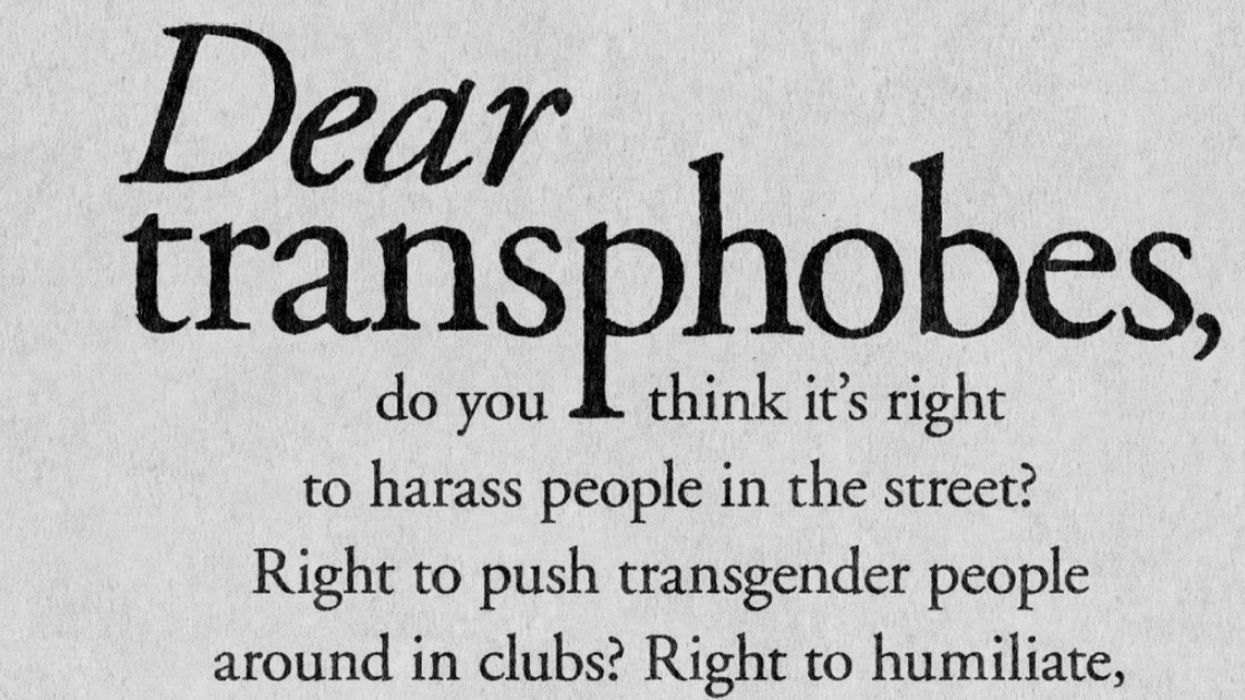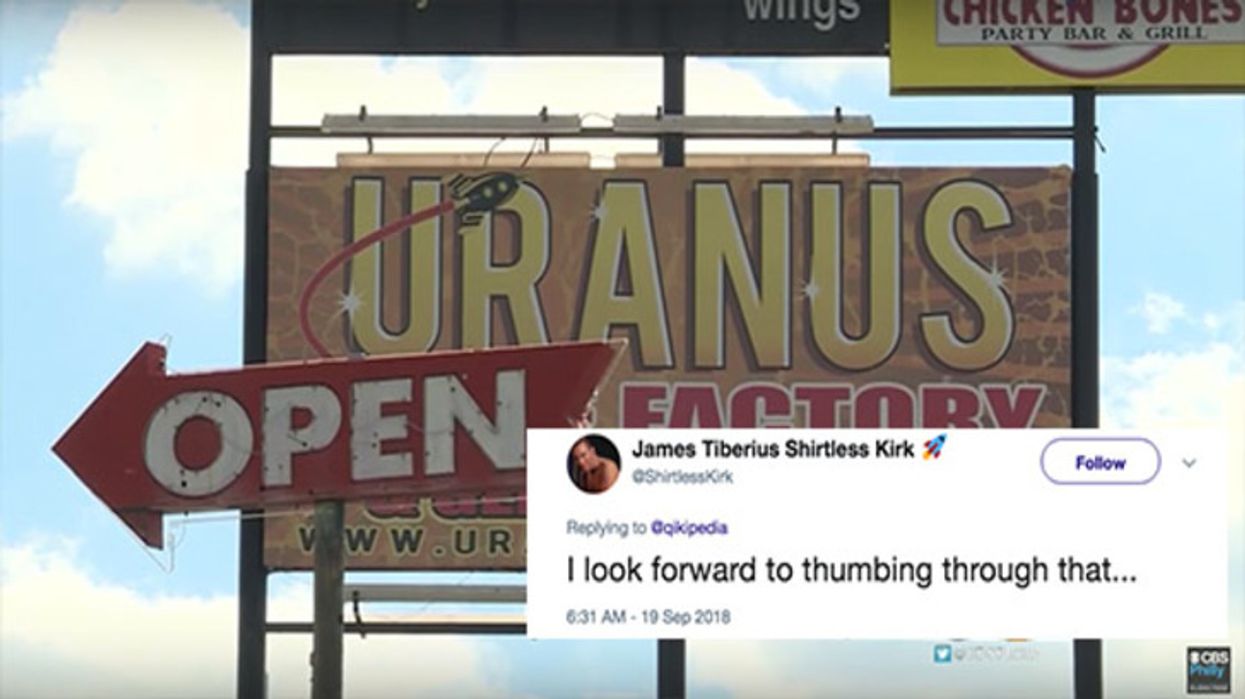September, 2000, HANOVER, Germany - What a perfect combination it was! A Star Trek convention and a World Expo, both in the astonishingly engaging city of Hanover, Germany.
Star Trek is a future-oriented show with a philosophy of responsibility for the environment we inhabit. The Hanover World Expo is an international fair with a strategy not only of displaying today's cutting edge technology together with ecological consciousness, but of planning that consciousness into the urban design of the long-term development of Hanover. And the city of Hanover that I visited this month was at once gracious and raucous, urban and sylvan, traditional and boldly moving into the future. It was a fascinating visit and I had a great time.
The Expo Trek convention was a wonderful extended family reunion. I visited with fans who had become friends over the years from the countless conventions and cruises we had shared. But this Star Trek convention was unique. Creative convention organizers par excellence, Dirk Bartholomae and Gerhard Raible, put this one in a huge revival meeting tent on a rustic campground. They included thought-provoking panel discussion topics new to Star Trek conventions on human rights and religious diversity. The topics seemed particularly pertinent in a Germany that is experiencing a disturbing resurgence of neo-Nazi activities. These panels were the sobering issues part of a wholly uplifting convention. The ovation at the conclusion of the closing ceremony, with sunflower presentations, was overwhelming. The fans "transported" me - with no help needed from Scotty at all.
The Expo, too, was transporting in its own extraordinary way - figuratively as well as literally. What first struck me was its size. It was vast. The guides told me it covered 160 hectares, which meant nothing to me. But I could see from the transport pod that carried me high above the expo grounds that 160 hectares was enormous. From this bird's eye view, I saw buildings in the shape of cones, pyramids, cubes, domes and countless other variations on geometric forms. A few even looked like shuttlecrafts and starships. Some were made of glass, others shone metallically and some had shimmering sheets of water cascading down its skin. They were strikingly futuristic. The guide told me that the theme of the Expo was "Humankind - Nature - Technology: A New World Arising."
All of the pavilions, however, were not avant-garde New World. Some, like those representing Bhutan, Thailand and Nepal, were decidedly traditional. They recreated richly ornate, time-honored temple structures of their respective cultures. Yemen even built a replica of a middle-eastern palace surrounded by a swarming market bazaar. They looked strangely anachronistic, and, to me, rather unexciting.
The most successful pavilions, I thought, were the ones that most imaginatively addressed the use of technology in humankind's relationship to nature. The Japan Pavilion was a spectacular example. It was an immense structure, but at the same time, light, graceful and undulating. The soaring vault-like construction was made entirely of recycled paper. The support structure members were made of paper rolled up tight and hard into rods as strong as bamboo poles. These brown bamboo-like tubes were woven in great arches to shape the multi-story structure. A white, translucent, weather resistant skin made of a combination of paper and plastic covered this construction. The brown bamboo-like poles formed an elegantly lacy pattern outlined by the soft white natural light seeping through the luminous skin. The pavilion was altogether fresh, strikingly contemporary and subtly Japanese in its aesthetics.
The pavilion representing the Netherlands also impressed me. The structure covered only 10 percent of the land. The rest was a vast garden landscape representing the varied flora of Holland. This land use illustrated the Dutch talent for making optimum use of their scarce land reclaimed from the sea. The pavilion itself was a wondrous structure stacked onto six levels, each lush with the elements of nature. I took the elevator to the top and gradually worked my way down either ramps or stairways. The roof level was a body of water with a grassy island in the middle with windmills as an alternative form of energy production. I descended to the next level, which was a theater and exhibition area sheltered from the outside by a curtain wall of water representing rainfall. The next level down was a living forest with real trees imported from Holland. The support structure holding up the upper levels were natural tree trunks. Each descending level artfully displayed the diverse flora of the land and the peoples' interrelationship with nature. The Netherlands Pavilion succeeded wonderfully in presenting virtually every facet of the life of the Dutch people and capturing the theme of the Expo in a limited space.
Limited space is a challenge but so is time. I had only scratched the surface of this gigantic exposition. There were many other tantalizing pavilions I wanted to visit but time was my great limitation. What I did experience, however, was dazzling. I will savor the memory for a lifetime.
I wanted to make time for Hanover itself. The city was a delightful discovery. Among Germans, Hanover has the reputation of being a staid, rather boring municipality. I discovered that to be totally false. The people were warm and gracious. The hospitality of Claudia Wolff and her mother Karin, both natives of Hanover and fans who have become friends, and a host of others like Sussanne, Andreas, Jan, and Filip, was terrific. Their love for Hanover was infectious. I came to love the city as well.
Hanover is most certainly not a staid city. I was introduced to how wildly riotous it can be on a Saturday afternoon. From morning on, I kept hearing an unrelenting, rhythmic drumbeat off in the distance. It seemed to be coming closer to my hotel. I asked the clerk at the reception desk about it. He smiled a cryptically insinuating smile and informed me that it was the Reincarnation Parade held annually in Hanover. It sounded like some religious observance to me. When the parade finally arrived, however, wildly thumping dance music and all, I discovered to my wide-eyed amazement that what I had thought to be a spiritual pageant was, instead, the most outlandish rave parade I had ever seen. Actually, it was the first one I'd ever seen -- mile after unending mile of writhing, swaying bodies - some with very little on - dancing in sheer ecstasy. In fact, more than a few seemed to be on some chemical ecstasy. There were flat bed trucks overflowing with prancing, jiggling bodies. There were double-decker buses crammed with dancing bodies. And the street was a sea of writhing, surging bacchanalia. I'm from Hollywood but Hanover sure showed me a thing or two. One thing for sure - Hanover ain't staid.
And Hanover is urbane. The centerpiece of the city is it's "new" town hall or rathaus built in 1913. The neo-Renaissance building with its high domed cupola looming over the city was damaged badly during the bombing of the Second World War but has been carefully rebuilt. In the great rotunda are four large models of Hanover at different periods in its history. The model of the ruined city in 1945 was a sobering reminder of the madness of war. Andreas and Sussanne took me up to the very top of the building in a unique incline elevator that traverses the curve of the dome. The view from the top was breathtaking. On another morning, Claudia, who works in the city's urban planning department, took me for a walk around the lovely park and pond behind the town hall. She told me that Hanover is a city that loves its parks and gardens and is considered one of the greenest cities in Germany. I agreed. I told her I loved my hotel overlooking a man made lake, Maschsee, with a forested park around it with running, walking and bicycling paths. I jogged around the lake every morning.
Hanover is, as well, a sophisticated modern city. There is a controversial new bank high rise building looming up over the treetops. Some in Hanover are opposed to the glassy new presence on the skyline and others love it. The debate is healthy evidence of the passion the people feel for their city. I think it is a dazzling building and will be an enhancement of the Hanover skyline as well as its streetscape. I'll stay tuned to the debate.
On a trolley ride through the city, I noticed another eye-catching new building under construction. The medium rise office structure was twisted in place with staggered window placements, like a building caught in the middle of a whirlwind. I recognized it instantly as the signature style of Californian architect, Frank Gehry who designed the much-discussed Guggenheim Museum in Bilbao, Spain.
I was visually stopped even by some of the trolley stops. They were contemporary art pieces in themselves. One was a fanciful composition of bright yellow and black blocks. Another looked like a sculptural tortoise shell. We rode past the once controversial, now much loved Nana statues - three colorfully whimsical polyester sculptures of rotund dancing female figures - sort of like sculptural rave dancers in the Reincarnation Parade. Taking the trolley through the streets of Hanover was like a trip through an outdoor contemporary art gallery. Hanover is a bold, culturally venturesome city.
It also seems to be a foresighted planner of its urban development. Claudia showed me a model in the lobby of her office building of a new town called Kronsberg being built in concert with the Expo. The residential units built for the staff of Expo will become housing for the Kronsberg community to come. The new public transportation system built for Expo will also be the transit system to support the new town. The structures built for Expo itself will be reused after the exposition as cinemas, academic institutions, and retail and office buildings that will become a part of the Kronsberg job, shopping, education and service sector. Small community green space is either already built or designed into the future residential districts. Rainwater is planned to be captured and recycled to keep the public parks lush and green. The Expo theme of "Humankind - Nature - Technology: A New World Arising" is not just a trendy slogan. It is indeed the driving philosophy of this fascinating city. I know I'll be coming back to Hanover to see how this New World rises in the future.
Scotland Tackles Transphobia and Homophobia In Brilliant New Billboard Ads ❤️
The Scottish government has had enough of hate crimes and is moving forward with a gutsy campaign.
According to Pink News, Scotland is launching a new initiative to combat intolerance with messages respectively addressing "bigots," "disablists," "homophobes," "racists," and "transphobes" in a series of ads circulating across the country.
Each message is signed on behalf of Scotland.
The campaign is part of the Scottish government's One Scotland project in an effort to reduce hate crime.
"The provocative ads were produced by the Scottish Government and Police Scotland as part of the One Scotland campa… https://t.co/KjinQL9xXT— Lizanne Foster (@Lizanne Foster) 1537935300.0
One letter reads:
"Dear transphobes, do you think it's right to harass people in the street? Right to push transgender people around in clubs? Right to humiliate, intimidate and threaten them online? Well we don't."
"That's why if we see you doing harm, we're reporting you. We believe people should be allowed to be themselves. Except if they're spreading hate."
"Yours, Scotland."
In another letter, the country says it has a "phobia" of homophobic behavior.
"If you torment people because of who they love, shout word that we are not going to write, or use violence because you don't like who someone is holding hands with, you should be worried."
"If we see or hear your abuse, we're calling the police. That's because love lives in this country, not hate."
"Yours, Scotland."
One Scotland's website describes the organization as one that aims to continue building an inclusive society while recognizing the significant strides made so far towards equality.
"One Scotland embodies the inclusive society we want in Scotland, where equality and human rights are respected and every individual and minority group feels valued."
There is a new ad campaign against hate crimes in Scotland. “We are a caring nation, not a hating one”.… https://t.co/rfsiFjIq6V— Jen Yang Mezei (@Jen Yang Mezei) 1537975493.0
The website defines hate crimes as abuse that "can be verbal or physical and has hugely damaging effects on the victims, their families and communities, and we all must play our part to challenge it."
"Police Scotland takes hate crime very seriously. In the last year there were over 5,300 charges of hate crime reported to the Procurator Fiscal in Scotland1."
"However, there are many more incidents that go unreported. We all have a responsibility to report hate crime if we witness it – it's the only way we can challenge it, and put an end to it for good."
The fact that the Scottish government and police are behind this ad campaign is incredible. It's good to see at lea… https://t.co/zMrqDVrhed— TransgenderDate (@TransgenderDate) 1537900917.0
Justice minister Humza Yousaf is familiar with being a victim of a bigotry and is encouraging people to call out and report any incidents involving harassment.
"As somebody who has faced Islamaphobic and racial abuse over the years, I know how upsetting being a victim of hate can be. Hate crime and prejudice are completely unacceptable and we are absolutely committed to tackling it."
"We all have a role to play in stamping out prejudice and I would ask anyone who witnesses a hate crime to play their part and report it. Justice agencies such the police and Crown Office will deal sensitively with reports made and people should have confidence in how they will be treated. Last year there were over 5,300 charges of hate crime reported to the Procurator Fiscal in Scotland but there are still many incidents that are going unreported."
New Ad Campaign launching on billboards and ad spaces all over #Scotland tackles #hatecime. The Police Scotland a… https://t.co/VJFH0jprjP— Pinksixty (@Pinksixty) 1537896702.0
Henrietta Mochrie identifies as transgender and has been the victim of repeated harassment and abuse. She emphasized the importance of speaking out against the hatred.
"I'll often get street harassment, sometimes this has escalated to the point where I've been followed by people shouting abuse at me, just because of who I am."
"It makes me feel really down and scared to leave the house. It's important that if you witness hate crime that you report it to take a stand against hate."
One Scotland's ad campaign officially launched on Wednesday.
Hopefully, it won't take too long before other nations follow suit in this bold, yet necessary fight for equality.
H/T - OneScotland, PinkNews, Twitter
Feminists Slam Man Telling Them They Can't Have Both Chivalry And Equality
A man on Twitter informed feminists they had to choose between chivalry and equality.
He was promptly raked over the coals for even assuming an antiquated concept would be considered as a viable option.
Twitter user @Rich_Cooper stated:
"Dear feminists. You either get equality or chivalry. You can't have both."
Dear feminists. You either get equality or chivalry. You can't have both.— Richard Cooper (@Richard Cooper) 1536083523.0
One user responded:
"I'll take equality. I don't need special treatment."
@Rich_Cooper #BenevolentSexism is still #sexism. I'll take equality. I don't need special treatment.— ☮️ Minkajane ☮️ (@☮️ Minkajane ☮️) 1537276790.0
Cooper's rhetorical question did not go over so well. Both women and men expressed their disdain for his message.
One male user observed that chivalry was irrelevant and treating everyone with kindness and respect was compulsory.
"What people care about is caring, empathic [sic], considerate, thoughtful people, NOT whether THEIR door is held for them or THEIR meal is paid for them."
"Are there gender stereotypes in het[erosexual] dating? Sure. But that's separate from being a warm, giving, caring, grounded person."
@Rich_Cooper What people care about is caring, empathic, considerate, thoughtful people, NOT whether THEIR door is… https://t.co/wlGHWRzKLi— Mark W. Wilson, MD (@Mark W. Wilson, MD) 1537276816.0
Some women got right down to the point.
@Rich_Cooper Translation: I will only be nice to you if you agree to be subservient to me— Elizabeth Noll (@Elizabeth Noll) 1537292709.0
@Rich_Cooper Gotta love when a man tells women what they can and can't have. Thanks for the heads up buddy 😉 https://t.co/gDMJscuTac— Hannah ✊ (@Hannah ✊) 1537285112.0
@Rich_Cooper Translation: I couldn’t possibly be expected to treat women as equals, show them respect, and still feel like a man.— Dom (@Dom) 1537293169.0
@Rich_Cooper We are sooooo bored with "chivalry" which stems from the courtly love period in the middle ages when w… https://t.co/wRho1a9DTz— Jeanthejust (@Jeanthejust) 1537280103.0
@Rich_Cooper Dear man. As a feminist, I open doors for men all the time. I also offer my seat to men in need on t… https://t.co/uxdwfh1kEM— My ovaries dream of puppers (@My ovaries dream of puppers) 1537502301.0
The notion of chivalry and equality are mutually exclusive and not a lot of people thought it was a major priority for feminists.
Common courtesy is not chivalry.
@Rich_Cooper Nah. That's some real childlike, oversimplified thinking. There are obviously more than these two op… https://t.co/lUqnEJhIAp— TheQuietRanger (@TheQuietRanger) 1537342901.0
@Rich_Cooper Wow, I had no idea that feminists were campaigning for chivalry, thanks for the Valuable Insight lol… https://t.co/iK62FTM9WY— Tracy Campbell the DM (Dungeon Mom) (@Tracy Campbell the DM (Dungeon Mom)) 1537294172.0
@Rich_Cooper I hold the door open for a guy walking into Starbucks behind me. Tomorrow, he might do the same for me… https://t.co/xWQEu6QHrM— Emma Scott (@Emma Scott) 1537294526.0
This user pointed out the fact that chivalry stems from a history of men outdoing other men. The concept had very little to do with women.
"Chivalry is a medieval concept of men dressing to impress other men. It has little to do with equality."
"Some men were on top, other men were beneath them. Historically, women were rarely invited into the process."
@Rich_Cooper @kent_imig Chivalry is a medieval concept of men dressing to impress other men. It has little to do wi… https://t.co/m8YPUkaUzm— Mark Findlay (@Mark Findlay) 1537257080.0
Neil Bradley described the outdated concept of chivalry as one that implies men being superior to women in a September 8, 2017, article for Medium publications.
"Examples: opening the door for a woman, paying for a woman's meal, gesturing for a woman to go first. The justification is either that women are not physically as strong (to open the door), able to provide (pay for their own meal), or are more deserving of compassion than men (allowing women to go first)."
Bradley also added that he wants to treat others the way he wants to be treated and asked if that approach should be motivated by chivalry or equality.
"If the genders are to be considered equal and treated equally, how a man treats a woman will essentially be the same as how a man treats a man."
"The obligation to open the door, pay for the meal, and let women go first vanishes. Men do not do this to other men, therefore why do it for women?"
His final take was that the two concepts can't co-exist. Either one is chivalrous or treats everyone as equals.
At the end of the day, people were happy to show chivalry the door.
@seanrmccauley @DoverCook @ShappiKhorsandi @Rich_Cooper @MarkFindlay26 @kent_imig Nobody needs chivalry. Equality a… https://t.co/isq5Fo84iU— John Dougherty (@John Dougherty) 1537357843.0
H/T - GettyImages, Twitter, Indy100, Medium
Katy Perry, P!nk, Paul McCartney And More Sign Letter Threatening To Boycott SiriusXM Radio
Hundreds of artists have signed a letter threatening a boycott if SiriusXM's parent company, Liberty Media, doesn't back down from opposing the Music Modernization Act.
The act, which was expected to pass through Congress, streamlines royalty payments in the new age of digital technology, but it seems SiriusXM is objecting to a small section that would have the satellite radio company paying royalties on recordings dating before 1972.
That's a whole lot of songs and a whole lot of money the company is hoping to skip out on paying, but not if stars like Paul McCartney, P!nk, Stevie Nicks, Sia, Carly Simon, Gloria Estefan, Mick Fleetwood, Don Henley, Max Martin, and Katy Perry can help it.
The letter read, in part:
I'm writing you with grave concern about SiriusXM's opposition to the Music Modernization Act (Classics Act included).
We are all aware of your company's objections and trepidation but let me say that this is an opportunity for SiriusXM to take a leadership position. As you are aware, 415 Representatives and 76 Senators have already cosponsored the MMA along with industry consensus. It's SiriusXM vs all of us. We can either fight to the bitter end or celebrate this victory together. Rather than watch bad press and ill will pile up against SiriusXM, why not come out supporting the most consequential music legislation in 109 years? We do not want to fight and boycott your company but we will as we have other opponents. Stand with us! Be brave and take credit for being the heroes who helped the MMA become historic law! Momentum is building against SiriusXM and you still have an opportunity to come out on the right side of history. We look forward to your endorsement but the fire is burning and only you can put this out.
SiriusXM resoponded with a letter of their own:
Over the past several weeks, we have been the subject of some stinging attacks from the music community and artists regarding our views on the Music Modernization Act. Contrary to new reports and letters, this is really not about a SiriusXM victory, but implementing some simple, reasonable and straightforward amendments to MMA. There is nothing in our "asks" that gut the MMA or kills the Act. So let's talk about the substance of the amendments we propose, because we truly do not understand the objections or why these concepts have incited such a holy war.ontrary to the accusations, SiriusXM has proposed three simple amendments to the MMA.
First, SiriusXM has asked that the CLASSICS Act recognize that it has already licensed all of the pre-1972 works it uses. This amendment would ensure that artists – the people who are supposed to be at the heart of the MMA – receive 50% of the monies under those existing licenses. Is that unfair? Just today, Neil Diamond wrote in the LA Times that: "I receive a small amount of songwriting royalties, but no royalties as the recording artist." How can that happen? To date, SiriusXM has paid nearly $250 million dollars in pre-'72 royalties to the record labels. We want to make sure that a fair share of the monies we have paid, and will pay, under these licenses gets to performers. Without this provision, artists may never see any of the money SiriusXM paid, and will pay, for the use of pre-1972 works. Artists not getting paid hurts our business!
Second, Sirius XM thinks that the fair standard to use in rate setting proceedings is the standard that Congress chose in 1995 and confirmed again in 1998 – which is called the 801(b) standard. However, we are willing to move the "willing buyer/willing seller" standard contained in the MMA. In exchange, we have asked for the same concession that the MMA grants to other digital music services, but we were left out of — simply that the rates that were set last year for five years now apply for ten years. We thought this was a fair compromise when we read the "new" MMA that was released this weekend by the Senate, and are willing to live by that compromise.
Third, SiriusXM is asking the simple question: "Why are we changing the rate court evidence standard for musical compositions in this legislation so that it gives another advantage to broadcasters over satellite radio and streaming services?" There is no policy rationale for this change to tilt the playing field further in their favor, and frankly no one has been able to explain it to us. It is only fair that we debate why the change to Section 114(i) is in the MMA.
Did you all catch that? It sounds like lawyer speak for "we don't really want to say where we stand."
It seems all the letters were for naught. The Music Modernization Act passed in the U.S. Senate.
The #MusicModernizationAct has been passed by the U.S. Senate! 🎶 Along with our members across the country, we're e… https://t.co/52yNhtV4zk— Recording Academy / GRAMMYs (@Recording Academy / GRAMMYs) 1537318533.0
@kayhanley @SIRIUSXM Hi @kayhanley, I absolutely support the #MusicModernizationAct. I signed on as a cosponsor ear… https://t.co/j4JHXpLBxI— Elizabeth Warren (@Elizabeth Warren) 1537225190.0
People said this was impossible. Some even worked hard to make it impossible, even telling outright lies about wh… https://t.co/iMTlwJLWVw— Future of Music Coalition (@Future of Music Coalition) 1537309844.0
We're thrilled to share that the Senate has unanimously voted to pass the #MusicModernizationAct, an historic miles… https://t.co/Uuy2Yp8zCw— ASCAP (@ASCAP) 1537311517.0
It was time to celebrate and dance in the streets.
@ASCAP @Beth_ASCAP Grateful. That says it all. Grateful past language for the sweet souls who worked so hard to mak… https://t.co/JSeUNCwFSd— Paul Williams (@Paul Williams) 1537319434.0
@ASCAP @Beth_ASCAP @IMPaulWilliams YES!!!! Songwriters are dancing everywhere!— James Grey (@James Grey) 1537315642.0
@ASCAP @Beth_ASCAP @IMPaulWilliams Thank you for helping us all organize to get this done #MusicModernizationAct— Tangent Recording (@Tangent Recording) 1537311639.0
@ASCAP @Beth_ASCAP @IMPaulWilliams Greatness Is What Greatness Does....And This Is Great.— Eddie C Person Jr (@Eddie C Person Jr) 1537365270.0
@ASCAP @Beth_ASCAP @IMPaulWilliams #Love it!— CKGTHEDON (@CKGTHEDON) 1537315443.0
@ASCAP @Beth_ASCAP @IMPaulWilliams Fantastic News! Thank You U.S. Senate ~> Pass it House Of Representatives ~> Sig… https://t.co/tukiZ8Ryug— MarkAlexanderCarroll (@MarkAlexanderCarroll) 1537321589.0
@ASCAP @Beth_ASCAP @IMPaulWilliams Simply amazing hard work pays off.— PedroBarr (@PedroBarr) 1537320953.0
@ASCAP @Beth_ASCAP @IMPaulWilliams Thank all of you for your tireless efforts and work.Protecting what is important… https://t.co/goFps7yu2V— Roney Hooks (@Roney Hooks) 1537317136.0
@ASCAP @Beth_ASCAP @IMPaulWilliams I am so thankful for this wonderful change. We songwriters deserve it!— J.R. FOWLER (@J.R. FOWLER) 1537322119.0
As the saying goes, honest pay for honest work.
Some Residents Of Uranus, Missouri Are Not Happy About The Name Of Their New Local Newspaper 😆
There's nothing like a good pun about human anatomy. Really gets the juices flowing!
The Uranus Examiner is coming to this Missouri town. Yes, really. https://t.co/RKy7kDcCFT— The Kansas City Star (@The Kansas City Star) 1536865442.0
Owners of the new Uranus Examiner must have been snickering as they announced the paper's name. Apparently, it's caused quite the controversy in the small town of Uranus, Missouri, over the last few days.
Residents are divided over whether the pun is an embarrassment or perfectly snarky:
“It’s a serious newspaper!” declares the managing editor of the Uranus Examiner. @nypost https://t.co/uig5eYxT2t— Bryan A. Garner (@Bryan A. Garner) 1537038088.0
Folks on the internet responded with maturity and composure after learning about the Uranus Examiner.
Oh, wait. No they didn't.
@qikipedia Uranus Examiner... it's got a nice ring to it 😀.— Roy Elliott (@Roy Elliott) 1537364058.0
I pitched “The Regina Monologues” as the name for my column at the Regina Leader-Post and was unceremoniously turn… https://t.co/aejjXcooWK— Jana G. Pruden (@Jana G. Pruden) 1536938407.0
If we ever colonize Uranus, the hardest part will be picked a newspaper name. "The Uranus Examiner"? Gonna be rough.— Scott Johnson (@Scott Johnson) 1537192690.0
@qikipedia How is it I've lived in Missouri my whole life and never gone through Uranus— Joshua Ryman, Sigma Grindcore Consultant (@Joshua Ryman, Sigma Grindcore Consultant) 1537366074.0
The newspaper name is a source of controversy — “Butt I like it,” the Uranus mayor said. https://t.co/xZWn4qthd1— Kaitlyn Alanis (@Kaitlyn Alanis) 1536865208.0
If you think about it... there might actually be a method to the madness here. The brand new paper's name has received widespread media coverage over this past week. Simply put... everyone's talking about Uranus.
In terms of publicizing their new venture, the owners of the Uranus Examiner have actually done a pretty sweet job!
In the video above, a woman suggests the paper should have been called "The Pulaski County Examiner."
If you ask me, that's TOTALLY BORING, and wouldn't have generated as much interest and publicity for the paper. So while the name might be cringeworthy to some, you can bet Uranus that it'll stick around. Who knows, Uranus might even grow as a result!
H/T: Indy100, The Kansas City Star












 (
( (
(




